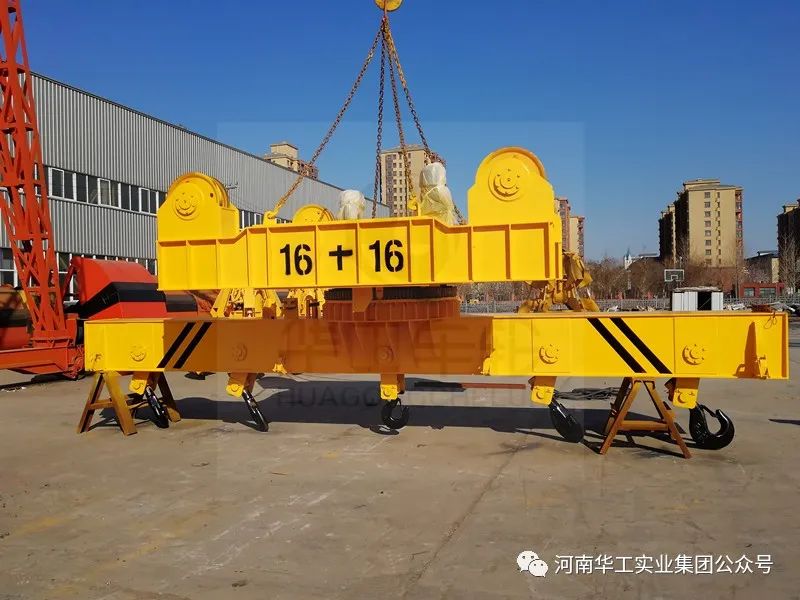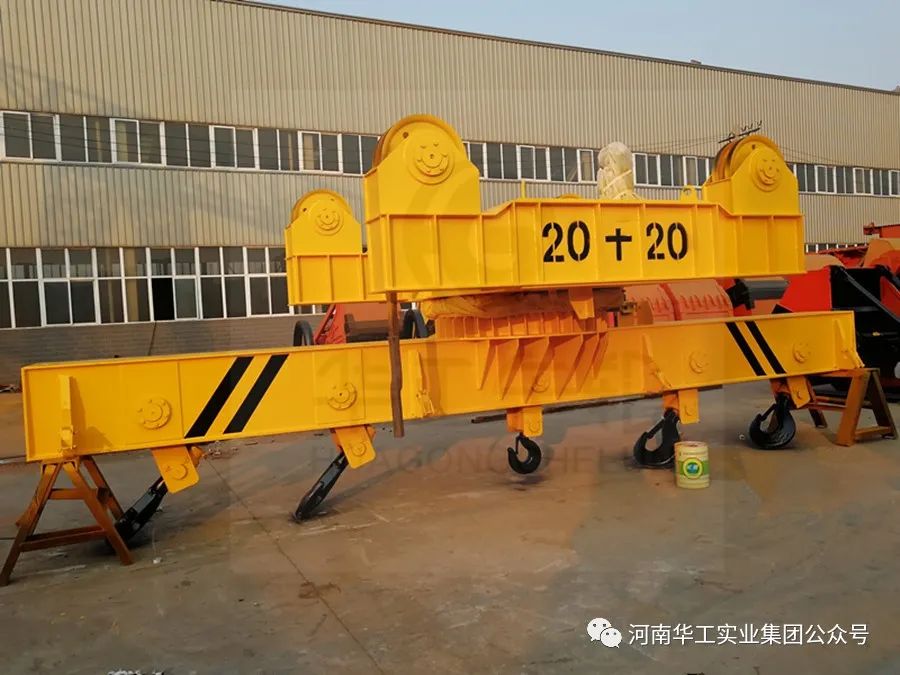I. Overview of the electric rotating spreader beam
The spreader beam (including the load bearing beam and connecting rigging) is a special rotating spreader for the lifting of the lifted object. The spreader beam is based on the machinery industry standard JB/T5000.1-5000.15-1998, the general technical conditions of heavy machinery, rotating spreader to achieve the lifting of the lifted object, its lifting and installation process, simple and reasonable structure, flexible action, easy to use, safe and reliable lifting.

Second, the classification of the sling beam
There are two kinds of lifting beams, one is hook fixed, called fixed lifting beam; one is hook adjustable, called adjustable lifting beam.
Three, the main structure of the sling beam
1、Main bearing sling beam
The main load-bearing lifting beam is the main load-bearing combination part, which has a safety factor of 4 times, the upper part has a lifting ring, which can be directly connected with the overhead crane hook, after the traveling crane connects the lifting beam, the lifting work is carried out.
2、Connecting rigging
Used to carry the beam and in the package of the connection rigging, for the lifting beam left and right ends of the lifting lugs.
Four, lifting beam use method
1. Move the overhead crane so that the overhead crane hook is connected to the hoist ring of the lifting beam. When lifted to a suitable height, check whether the lifting beam is level and whether the chain is knotted.
2. Then move the main beam to the top of the hoisted object, connect it with the hoisted object using the connecting rigging, and then slowly lift the overhead crane.
3. test lifting balance after the crane lift, the main sorghum balance should be less than 1 °, with the naked eye to observe whether the bearing beam is in balance, when completely in balance, you can carry out lifting.
4. load test lifting load test lifting process is the overall preparation of the latter part of the process, the operation of all the process, should slowly lift the load, when just off the ground, stop lifting, observe the overall force situation, and then slowly relax the load, such as no abnormalities, before normal lifting.

Five, lifting beam lifting precautions
1、Before using the lifting beam, visually inspect the beam body for any deformation, cracks, open welds and other abnormal phenomena. The trial lifting process should meet the running route of the load, the environmental conditions, determine the lifting and putting up position, and not to lift any of the influential lifting, for the main lifting beam equipped with rigging (T8 grade high-strength alloy chain), not to change position and knot when using.
2. During the trial lifting process, if there is any abnormal sound, deformation or crack in the load of the beam, immediately stop the trial lifting.
When the trial hoisting is successful, only then can the hoisting and lifting be carried out. In the process of hoisting, let the relevant personnel must understand the identification mark and let the operator see the communication contact.
3、When lifting the load, overloading is not allowed, the beam must be in a stable state, the beam must not produce swing, prevent the beam from losing balance, no one is allowed to stand under the load, and manual load support is prohibited.
VI. Correct daily maintenance and servicing
1、The beam spreader must be placed on a special shelf after use and stored in a ventilated, dry and clean plant, and kept by a special person.
2、The surface of the beam must be protected against rust frequently and is not allowed to be stored in acid, alkali, salt, chemical gas and humid environment.
3、Storage in high temperature area is prohibited.
4、Clean the rotating parts regularly and lubricate regularly to prevent dry friction and jamming.
VII. Scrapping criteria
1、Any part of the beam body has cracks, after repair still has cracks.
2、Plastic deformation of the lifting shaft of the beam, which cannot be repaired or replaced.
3、The lug holes, lug shafts and circular holes are worn to 10% of the nominal diameter.
4、The rotating parts are out of order and still have jamming and cannot be rotated after repair.
5、The surface of the beam has serious bruises affecting the safe use.
Contact: Mrs.Peng
Phone: 86-15910902294
E-mail: pengying@hjwm.com.cn
Whatsapp:+86 13713229714
Add: 140 meters north of Dongyangze Road, Guiling Avenue, Changyuan City, Xinxiang City, Henan Province,China
We chat
